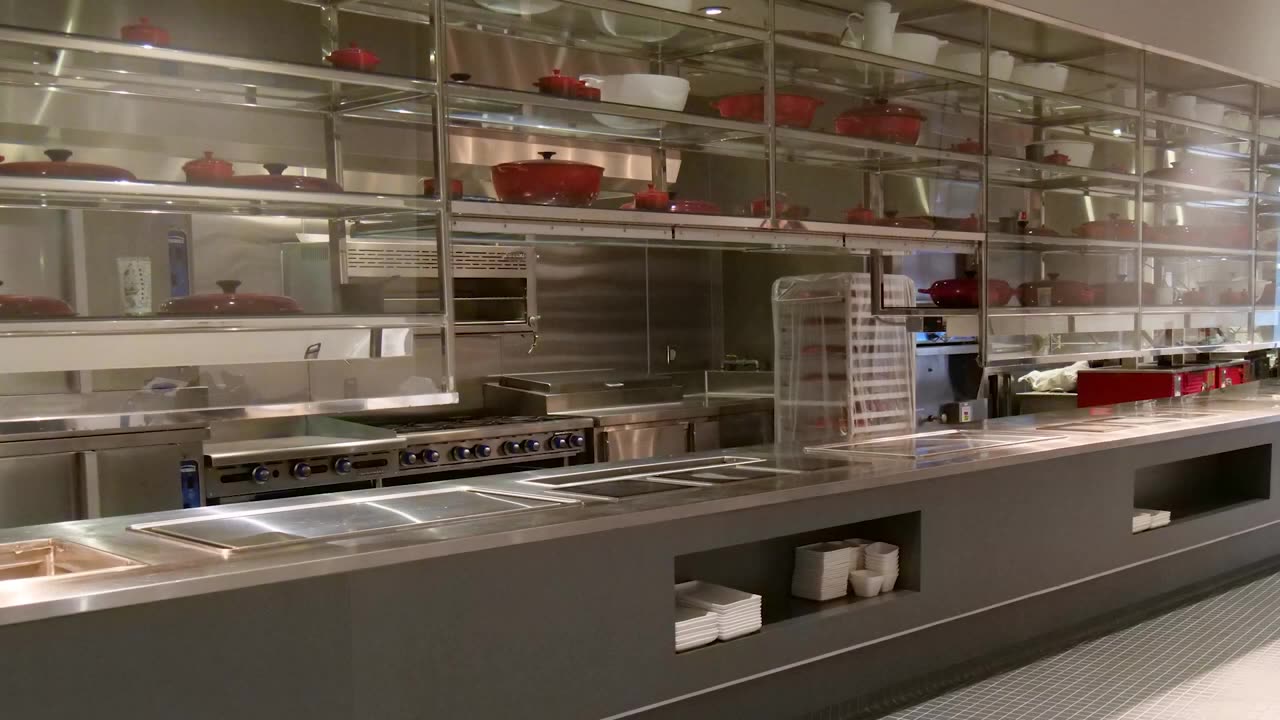Premium Only Content

Module 5 — Basic Equipment and Facilities
### **Module 5: Basic Equipment and Facilities**
Proper equipment and facilities are fundamental for maintaining food safety. They ensure efficient food preparation, storage, and handling while minimizing the risk of contamination.
---
### **1. Importance of Proper Equipment and Facilities**
- **Prevents contamination**: Ensures clean and safe food handling practices.
- **Improves efficiency**: Speeds up food preparation and storage processes.
- **Meets regulatory standards**: Ensures compliance with health and safety guidelines.
---
### **2. Key Equipment for Food Safety**
#### **A. Food Preparation Equipment**
- **Cutting boards**: Use separate boards for raw meats, cooked foods, and produce to avoid cross-contamination.
- **Knives and utensils**: Keep tools clean, sanitized, and stored properly.
- **Thermometers**: Ensure food is cooked, stored, and held at safe temperatures.
- Refrigerator: ≤40°F (4°C)
- Freezer: ≤0°F (-18°C)
- Cooking: Varies by food type (e.g., poultry at 165°F/74°C).
#### **B. Cleaning and Sanitizing Tools**
- **Dishwashers**: Industrial or household models capable of washing at high temperatures.
- **Sanitizing solutions**: Use approved chemicals to clean surfaces and equipment.
- **Scrub brushes and sponges**: Replace regularly to prevent microbial growth.
#### **C. Storage Equipment**
- **Refrigerators and freezers**: Maintain consistent temperatures to prevent spoilage.
- **Shelving**: Use durable, non-absorbent, and easy-to-clean materials.
- **Sealed containers**: Store food in airtight containers to avoid contamination.
#### **D. PPE Storage**
- Dedicated areas for storing clean personal protective equipment (PPE) to prevent contamination.
---
### **3. Facility Requirements**
#### **A. Flooring**
- Non-slip, durable, and easy to clean.
- Sloped for proper drainage in wet areas.
#### **B. Walls and Ceilings**
- Smooth, non-porous, and resistant to moisture and staining.
- Light-colored surfaces to easily spot dirt.
#### **C. Ventilation**
- Proper ventilation to remove heat, smoke, and odors.
- Prevents condensation that could lead to mold growth.
#### **D. Water Supply**
- Clean, potable water supply for cooking, cleaning, and sanitation.
- Separate handwashing sinks equipped with soap and disposable towels.
#### **E. Waste Disposal**
- Adequate trash bins with tight-fitting lids.
- Regular waste removal to prevent pest infestations.
---
### **4. Maintenance and Inspection**
- **Routine checks**: Inspect equipment and facilities regularly for cleanliness and functionality.
- **Repairs and replacements**: Fix or replace damaged equipment promptly to maintain safety standards.
- **Pest control**: Keep facilities free from rodents, insects, and other pests.
---
### **5. Role of Equipment and Facilities in Food Safety**
- Proper tools and facilities minimize contamination risks.
- Streamlined processes enhance food quality and safety.
- Compliance with health standards ensures consumer trust and avoids legal issues.
---
### **Conclusion**
Having the right equipment and well-maintained facilities is essential for ensuring food safety. By investing in proper tools and adhering to high facility standards, food handlers can create a safe and efficient working environment that protects consumers and upholds public health.
-
 LIVE
LIVE
Nerdrotic
4 hours ago $12.34 earnedThe Best and Worst of 2024! Sony Blames Fans | Batman DELAYED | Nosferatu! |Friday Night Tights 334
5,608 watching -
 LIVE
LIVE
The Jimmy Dore Show
3 hours agoVivek Calls US Workers Dumb AND Lazy! Syria Being Carved Up Like an Xmas Goose! w/ Gerald Celente
18,100 watching -
 LIVE
LIVE
Dr Disrespect
8 hours ago🔴LIVE - DR DISRESPECT - WARZONE - SHOTTY BOYS ATTACK
3,426 watching -
 1:30:23
1:30:23
Twins Pod
7 hours agoHe Went From MARCHING With BLM To Shaking Hands With TRUMP! | Twins Pod - Episode 45 - Amir Odom
57.9K18 -
 1:02:30
1:02:30
Exploring With Nug
9 hours ago $0.50 earned2 Duck Hunters Missing After Kayak Capsizes!
6.56K -
 46:48
46:48
Mally_Mouse
2 hours agoLet's Hang!! -- Opening Christmas gifts from YOU!
23.9K -
 44:55
44:55
Athlete & Artist Show
20 days ago $1.58 earnedNHL 4 Nations Snubs, Was Hawk Tuah Coin A Scam?
32.3K -
 33:47
33:47
Stephen Gardner
8 hours ago🔥Pentagon Whistleblower UNLEASHES on Biden and Obama!
88.9K141 -
 2:20:30
2:20:30
The Dilley Show
9 hours ago $23.94 earnedRoger Stone in Studio plus Q&A Friday! w/Author Brenden Dilley 12/27/2024
75.8K16 -
 1:57:02
1:57:02
The Charlie Kirk Show
7 hours agoThe Great H-1B Battle + AMA | Lomez | 12.27.24
155K203